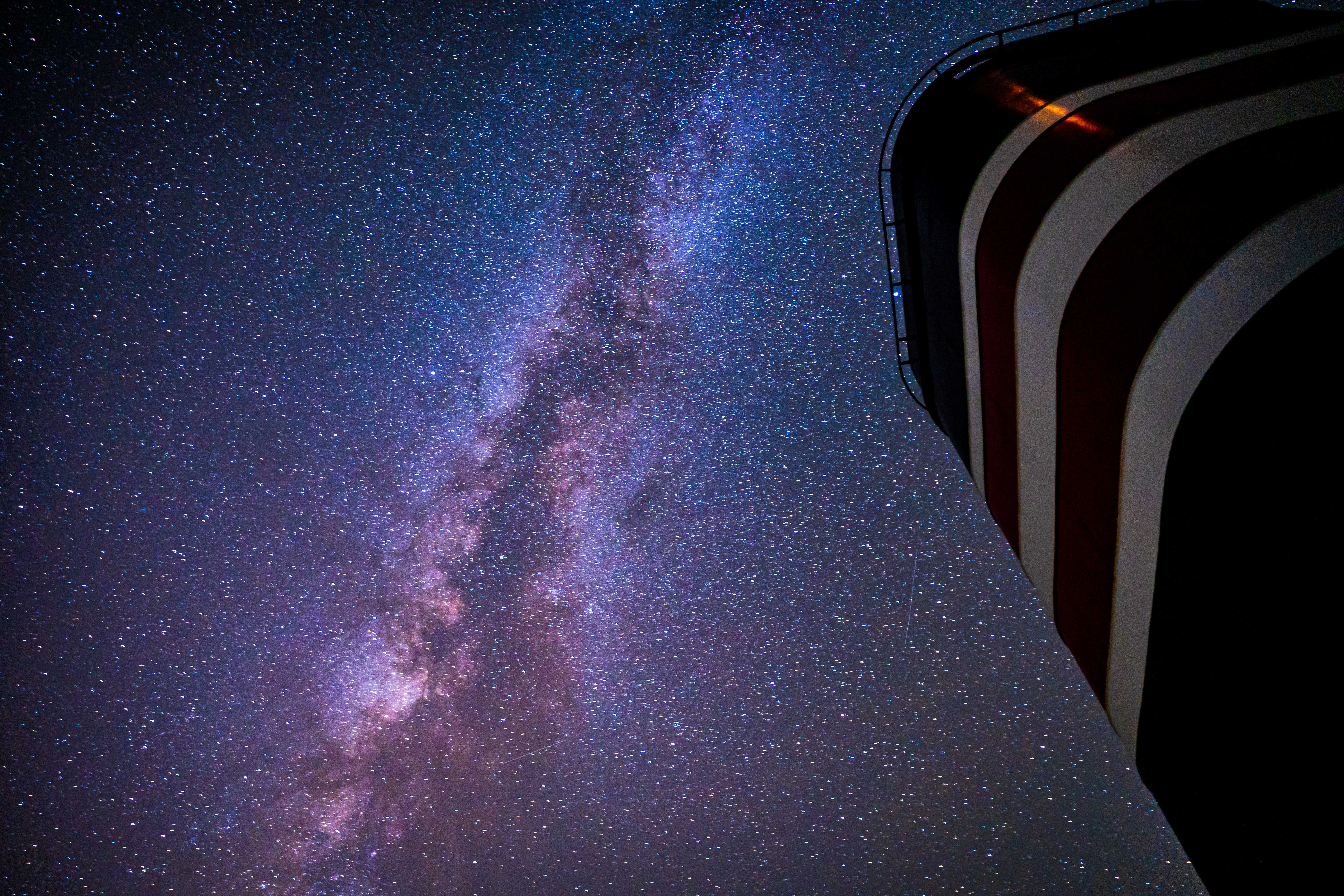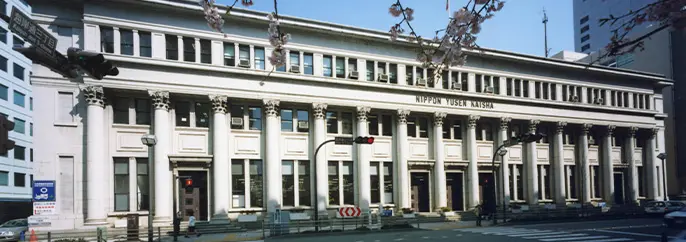[Diary of Ocean Breezes] Japan's History Unfolds from the Sea: A Column from the NYK Maritime Museum
Released : Jan. 23, 2025
Updated : Jan. 23, 2025
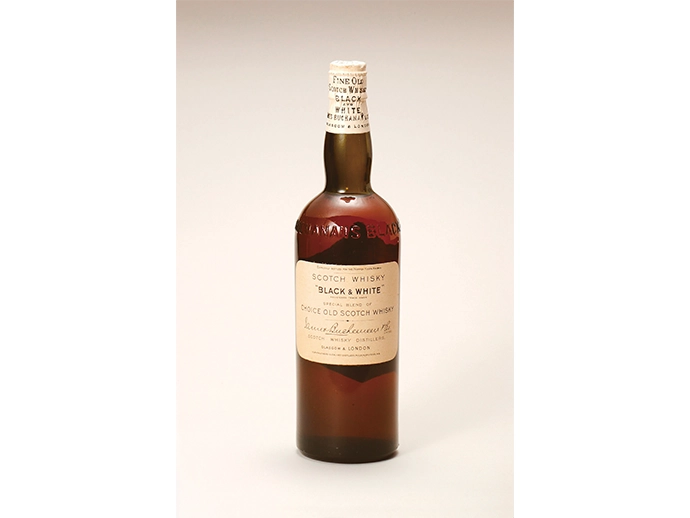
The NYK Maritime Museum presents the story of modern Japanese shipping through the company's history from its dawn to the present day. In this column, we share insights derived from the museum's collection.
Yokohama Ichiran no Shinkei (A Panoramic View of the Yokohama Skyline)
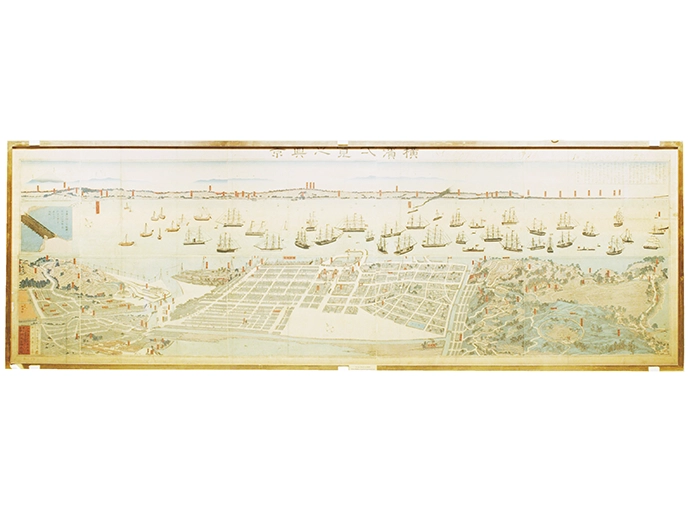
Gountei Sadahide, 1871, Woodblock Print, 70.0 cm x 210.0 cm (Permanent Exhibition)
Collection of the NYK Maritime Museum
Once a small village, Yokohama opened its port in 1859 and rapidly transformed into an international city within just a few years. The woodblock print "Yokohama Ichiran no Shinkei," created in 1871, depicts gas lamps and ironworks, symbols of the civilization and enlightenment of the time, along with numerous ships floating in the harbor.
Particularly noteworthy is the separate illustration of Yoshida Bridge depicted in the artwork. This bridge served as a critical gateway to the port, reconstructed in 1869 (Meiji 2) by British engineer Richard Brunton, incorporating Japan's first truss structure in an iron bridge, demonstrating how revolutionary iron bridges were then. The artist Gountei Sadahide (1807–1879?) studied under Utagawa Kunisada (1786–1865, later Utagawa Toyokuni III) and adopted various names throughout his career. His use of color in this piece is exquisite, allowing viewers to look down on Yokohama from various angles and heights, capturing the areas of Kanagawa-juku (a town next to Kanagawa Port) visible off the coast of present-day Yamashita Park, the Japanese residential areas towards Sakuragicho and the foreign settlement towards Motomachi, all while detailing the landscape of Yamate and the distant Negishi village. Exploring this artwork to identify current locations can be a delightful experience.
Commemorative Whiskey
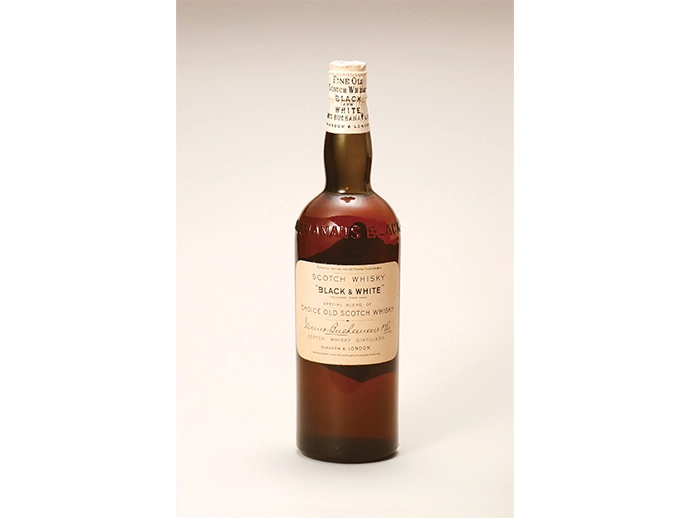
Whiskey Bottle (Unopened), Height 29.6 cm, Base Diameter 8.0 cm
Collection of the NYK Maritime Museum
This unopened whiskey bottle is dated 1928. The label reads, "Expressly bottled for the Nippon Yusen Kaisha." The brand is "BLACK & WHITE." During the Meiji to early Showa period, brandy and wine were commonly served on ships. Whiskey was also offered.
This whiskey bottle was a keepsake of the donor's mother and was transported to Japan in 1993 aboard the container ship California Saturn. The donor's grandfather worked as a maritime pilot in Seattle and Alaska and likely had connections with the company's captains. In 1928, the Seattle route featured ships like Tokiwa Maru, Shizuoka Maru, Iyo Maru, Yokohama Maru (II), Toyama Maru, Kaga Maru, and Mishima Maru.
Company regulations at that time included provisions that allowed the captain to entertain government officials and maritime pilots by providing them with alcoholic beverages on board, suggesting that this whiskey bottle was part of such hospitality.
Old Map of Yokohama
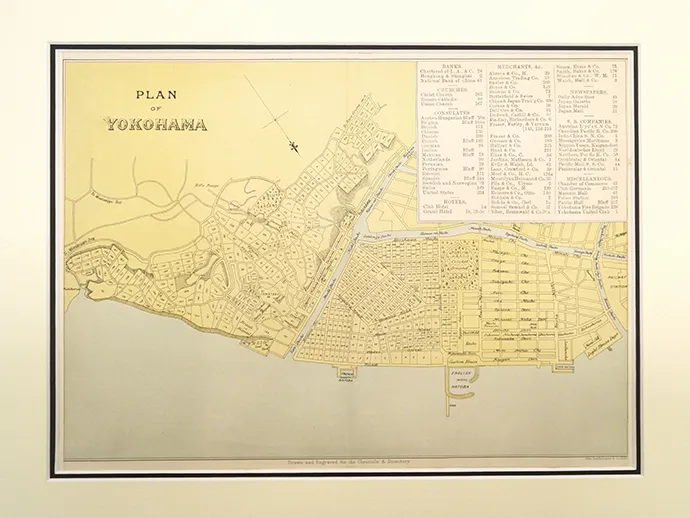
Height 24.4 cm, Width 31.7 cm
Collection of the NYK Maritime Museum
The opening of Yokohama began with Commodore Perry's arrival in 1853 and was formalized in 1858 with the Japan-U.S. Treaty of Amity and Commerce, which called for opening additional ports such as Kanagawa, Nagasaki, Niigata, and Hyogo. However, due to its direct connection to Japan’s Tokaido route connecting Kyoto and Tokyo, the shogunate designated Yokohama village as the open port, leading to its development.
Since then, Yokohama village has evolved into Yokohama Port. By the mid-Meiji period, banks, churches, foreign consulates, and trading companies clustered around the foreign settlement, necessitating the creation of maps indicating residence numbers. This old map was donated in April 2017 by Takao Ito, president of Hachiuma Steamship Co., Ltd., who purchased it at an antique shop in Singapore in 2004. Unlike the bird's-eye view style represented by "Yokohama Ichiran no Shinkei," this map is a “plan” featuring street names and residence numbers. Notably, in the annotations for S. S. COMPANIES, "Nippon Yusen, Kaigandori" is mentioned, precisely indicating the current location of the Yokohama Yusen Building (Yokohama Branch and NYK Maritime Museum).
Hashiguchi Goyo and NYK
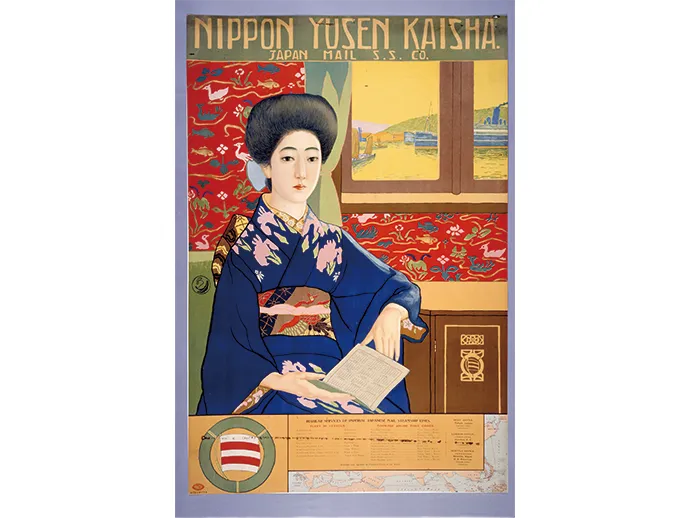
"Woman with Calendar," Hashiguchi Goyo, 1913, Lithograph, 92.2 cm x 61.7 cm
Collection of the NYK Maritime Museum
"Woman with Calendar" is a poster featuring a calendar. The work was produced by our company in 1913. The artist Hashiguchi Goyo (1881–1921) produced woodblock prints, Japanese paintings, Western paintings, illustrations, and privately published works. He also participated in bookbinding and was a researcher of ukiyo-e. The image on this poster depicts a woman with a ribbon tied in her hair, a fashionable style in the late Meiji period, with elements of Art Nouveau prevalent at that time. The decorative and flat nature of the composition is enriched by wallpaper patterns reminiscent of the sea. While the image of a woman holding something is typical for passenger ship posters, this poster stands out for aligning with the image of a shipping company while reflecting the era.
Hashiguchi Goyo had a brother, Hanjiro, who worked as a shipbuilding engineer for our company. It has been confirmed that Goyo was commissioned for the work through the mediation of Shigekichi Mihara, another employee and ukiyo-e collector, starting from October 10, 1912, as a contracted designer for the company’s printed materials under his real name, Hashiguchi Kiyoshi. He was paid an annual salary of 300 yen. Goyo contributed to numerous printed materials, including company brochures, route guides, and passenger lists, showcasing his diverse talents.
Note: The NYK Maritime Museum has been closed since April 1, 2023. We aim to reopen in spring 2027. Updates will be provided on the official NYK Maritime Museum website as they become available.

